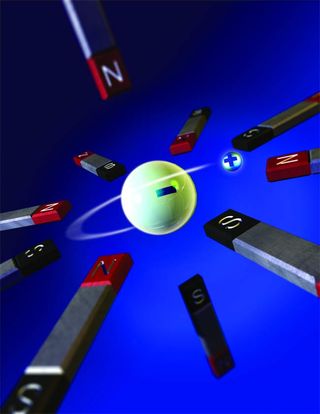
Why cooled antimatter is importantĬooled antimatter can enable scientists to perform more precise measurements and uncover any subtle differences between antimatter and ordinary matter. Those differences can provide insights into the biggest unanswered questions in physics, such as why antimatter is so scarce even if particles and antiparticles were likely created in equal amounts when the universe formed. When the researchers measured the cooled antiatoms’ energy transitions (the movement of electrons to different energy levels), their measurements were three times more accurate than those of uncooled antiatoms. Laser-cooling the antihydrogen atoms slowed them by more than a factor of 10. “It’s kind of like we’re shooting a tiny ball at the atom, and the ball is very small, so the slowing down in this collision is very small, but we do it many times and then eventually the big atom will be slowed down,” explained Makoto Fujiwara, one of the study researchers who works as a scientist at TRI-University Meson Facility, Canada’s national particle accelerator facility. The laser was tuned to the right wavelength so that any antiatoms that were moving toward the laser would slow down bit by bit.

The researchers then developed a laser made up of photons (light particles) to cool antihydrogen. They then slowed these antiparticles using extremely strong magnetic and electric fields. This allowed the researchers to confine clouds of positrons and antiprotons inside a magnetic field until these antiparticles combined to form antihydrogen. This allowed physicists to create antiatoms and perform a few tests, such as studying the properties of antihydrogen, which is the simplest atom made of pure antimatter.īut for scientists to conduct more complex and more accurate measurements, they would have to slow antimatter even more. To that end, ALPHA researchers laser-cooled antimatter since laser cooling slows the motion of particles.įirst, the team accelerated ordinary particles to near the speed of light and smashed them together to create antiparticles. Scientists at CERN, which operates the world’s largest particle physics laboratory, recently managed to slow antiprotons from near the speed of light to more manageable speeds. It also moves at breakneck speeds, so while scientists are now able to produce and trap antimatter, making precise observations of this mysterious material remains a big challenge. Similarly, a proton has a positive charge while an antiproton has a negative charge.Īntimatter has been proven to exist but is extremely difficult to study because it disintegrates when it comes into contact with ordinary matter. In other words, antiparticles are identical to ordinary particles except for their reverse physical properties – where an electron has a negative charge, its antimatter counterpart, the positron, has a positive charge. Laser-cooling antimatter slows its motionĪntimatter is the mirror version of “ordinary” matter, or any material that is made up of a proton, electron and neutron. The laser-cooling technique, which the researchers developed as part of the Antihydrogen Laser Physics Apparatus (ALPHA) experiment, can possibly allow scientists to perform more accurate measurements on antimatter and eventually answer some of the biggest questions in physics, such as why antimatter is so scarce in the cosmos.

The chilled antimatter reached temperatures just one-twentieth of a degree above absolute zero (minus 459.67 F), which was more than 3,000 times cooler than the coldest recorded temperature in the Antarctic.


Researchers from the European Organization for Nuclear Research (CERN) successfully used laser to cool antimatter to near absolute zero.


 0 kommentar(er)
0 kommentar(er)
